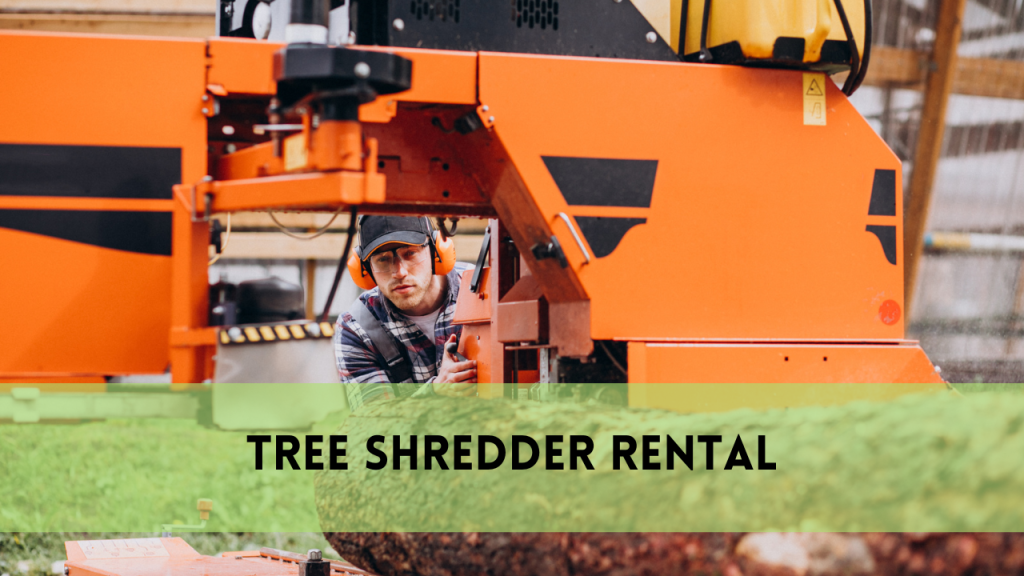You’re not alone if you’ve ever wondered how to stop a tree from growing. Trees may grow too big, too quickly, or in the wrong location. Perhaps you have a tree that is threatening the foundation of your house, or perhaps you want to keep a tree at a specific size for aesthetic reasons. In this post, we’ll look at several ways and tactics for controlling tree growth, ensuring that your green friends keep in check without affecting the environment.
Understanding to Stop tree From Growing
Before we get into how to stop a tree from growing, it’s important to understand how trees develop. To turn sunlight into energy, trees, like all plants, depend on a process known as photosynthesis. They utilize this energy to expand, and their growth is influenced by a variety of variables such as:
- Trees need necessary nutrients from the soil in order to develop. These nutrients are taken up by the roots and distributed throughout the tree.
- A sufficient amount of water is essential for tree growth. Water is absorbed by the roots and utilized to aid in a variety of metabolic activities.
- Light is required for trees to undergo photosynthesis. This process is critical to their energy generation and, as a result, growth.
- Each tree species has distinct genetic characteristics that influence its development rate and potential size.
- Environmental factors such as temperature, humidity, and soil type may all have an impact on tree development.
To Stop a Tree From Growing Technique
Pruning is an efficient method of controlling a tree’s development. Pruning is the selective removal of branches, buds, or roots in order to shape and regulate the size of a tree. Pruning, when done properly, may keep a tree at a set size and encourage healthy development. Here’s how you may benefit from pruning:
Pruning: Prune your tree on a regular basis to eliminate undesirable growth. Concentrate on removing branches that are too near to buildings, such as houses or fences, or that constitute a safety threat.
Crown Reduction: Pruning is cutting higher branches to lessen the tree’s height and spread. This strategy is appropriate for keeping a tree manageable while retaining its original form.
Thinning: Pruning eliminates certain branches to lessen the density of the tree. This strategy promotes healthy development by allowing greater sunlight penetration and ventilation inside the tree.
Pollarding: Pollarding is a more severe kind of pruning in which the tree is cut down to its primary stem. This strategy is often used to limit the growth of fast-growing trees.
Stop a Tree From Growing via Root Pruning
Root pruning, in addition to branch trimming, may assist manage a tree’s development. Because roots are important for fertilizer and water absorption, you may inhibit a tree’s development by attacking the root system. Here’s how you do it:
Installation of Root Barriers: Root barriers are physical barriers installed underground to reroute tree roots away from certain places. You may prevent roots from intruding on buildings or undesired locations by creating a root barrier.
Root Pruning: Root pruning is the process of cutting and removing tree roots in order to limit their development. When root trimming, use caution since excessive root pruning might stress the tree.
Girdling: It is a more radical procedure that entails cutting a ring around the trunk of the tree, essentially shutting off the flow of nutrients and water. While it may inhibit tree growth, it should be handled with care since it might injure or kill the tree.
Chemical Procedures to stop a tree from growing
If you want to stop a tree from growing without physically cutting it, you may use chemical approaches such as growth inhibitors and herbicides. Remember that employing chemicals should only be done as a last option, and that you must observe all safety rules and local restrictions while doing so.
Development Inhibitors: Growth inhibitors are substances that may be used to halt the development of a tree. These toxins alter the tree’s hormonal balance, slowing its growth rate overall.
Herbicides: Chemicals that may be used to kill or prevent the development of undesirable plants, including trees. Herbicides, on the other hand, should be used with great caution since they might have unforeseen environmental impacts.
Environmental Aspects to stop a tree from growing
Manipulation of environmental conditions may also be used to impact the development of a tree. While these techniques will not stop a tree from developing, they will decrease its growth rate:
Reduce Water Supply: Restricting the tree’s access to water might cause it to develop slowly. This should be done with caution to prevent causing damage to the tree’s general health.
Limit sunshine: By carefully planting other trees or installing shade devices, you may decrease the amount of sunshine a tree gets, slowing its development.
Soil Quality: To flourish, trees need nutrients from the soil. You may restrict a tree’s access to key nutrients by changing the soil quality.
The Use of Tree Growth Regulators To Stop a Tree From Growing
Tree growth regulators (TGRs) are substances that successfully inhibit the development of trees. They function by interfering with the tree’s normal hormone synthesis, causing it to develop at a slower pace overall. When utilizing TGRs, do the following steps:
Determine the Best TGR: Different tree species may need different TGRs. To choose the best product for your tree, speak with a local arborist or tree care specialist.
Proper Application: Follow the manufacturer’s directions while applying the TGR. Typically, tiny incisions in the tree are made and the TGR is injected into the tree’s vascular system.
TGRs may need to be reapplied on a regular basis to maintain their efficacy. Keep an eye on the tree’s growth and modify the application as needed.
Considerations and Potential Risks
While these approaches may aid in the management of tree development, it is important to be aware of the following dangers and considerations:
Tree Health: Excessive trimming or severe measures such as girdling may injure or kill a tree. Always put the tree’s health and well-being first.
Local restrictions: Before applying any tree growth control measures, check local restrictions and permissions. Tree management is restricted in several cities and towns.
Consult a specialist: If you’re not sure which technique to use or how to apply it, speak with a qualified arborist or tree care specialist. They may provide advice and ensure that the job is done safely and properly.
Services
Faqs
Can I entirely halt the growth of a tree?
While it is difficult to completely stop a tree from growing, you may restrict its development using numerous techniques such as pruning, root management, and tree growth regulators.
Is it safe to use pesticides to prevent tree growth?
Chemicals should only be used as a last option and with extreme care. Misuse of herbicides or growth inhibitors might have unanticipated environmental implications, thus it’s critical to follow safety recommendations and local restrictions.
How frequently should I cut my tree to keep its development under control?
The frequency of pruning is determined by the tree type, its pace of development, and your individual aims. Regular pruning, normally done every 1-3 years, aids in the preservation of the tree’s ideal size and form.
Are there any legal implications for regulating tree growth in my area?
Yes, there may be municipal restrictions and permits governing tree maintenance. Before using growth control methods, verify with your local authorities to ensure you are in accordance with any relevant regulations.
What are the hazards of excessive pruning or the use of severe methods?
Over-pruning or severe procedures such as girdling may injure or even kill a tree. When contemplating growth control strategies, always emphasize the tree’s health and well-being.
Conclusion
Stopping a tree from growing may be required for a variety of reasons, ranging from safety issues to aesthetics. However, it is essential to proceed with caution, keeping the tree’s health and the surroundings in mind. Make educated judgments on pruning, root management, chemical techniques, or environmental manipulation, and seek expert guidance if necessary. You may guarantee that your trees live happily with their surroundings by studying the options available and their possible implications.




